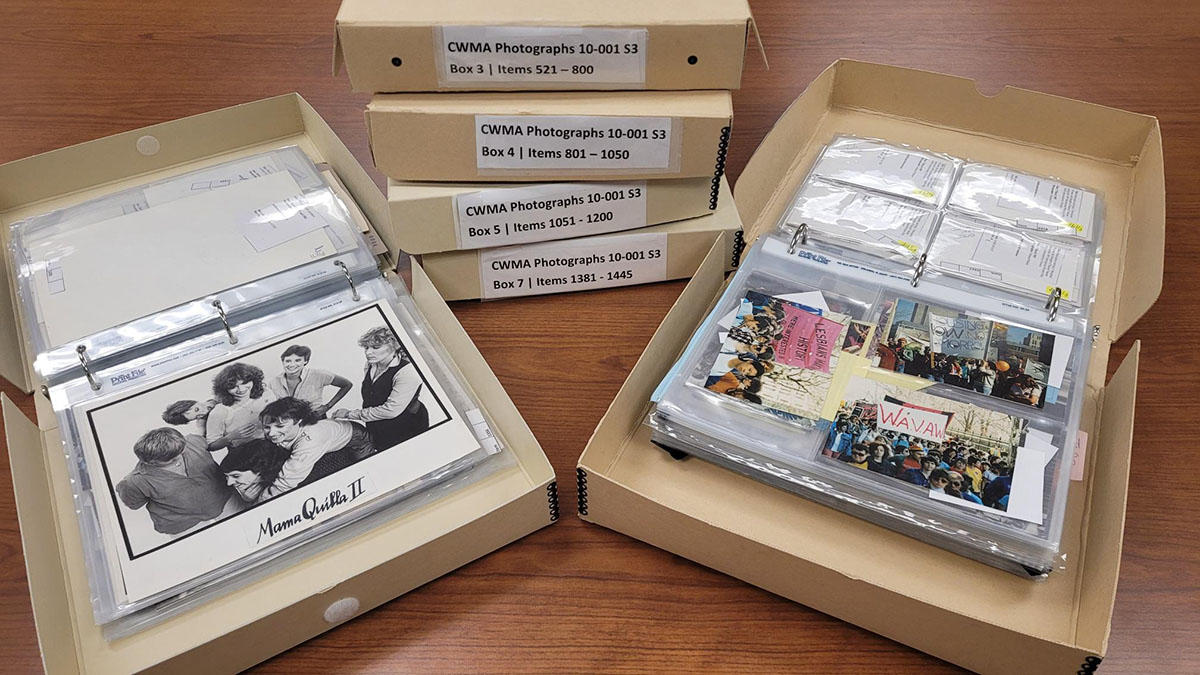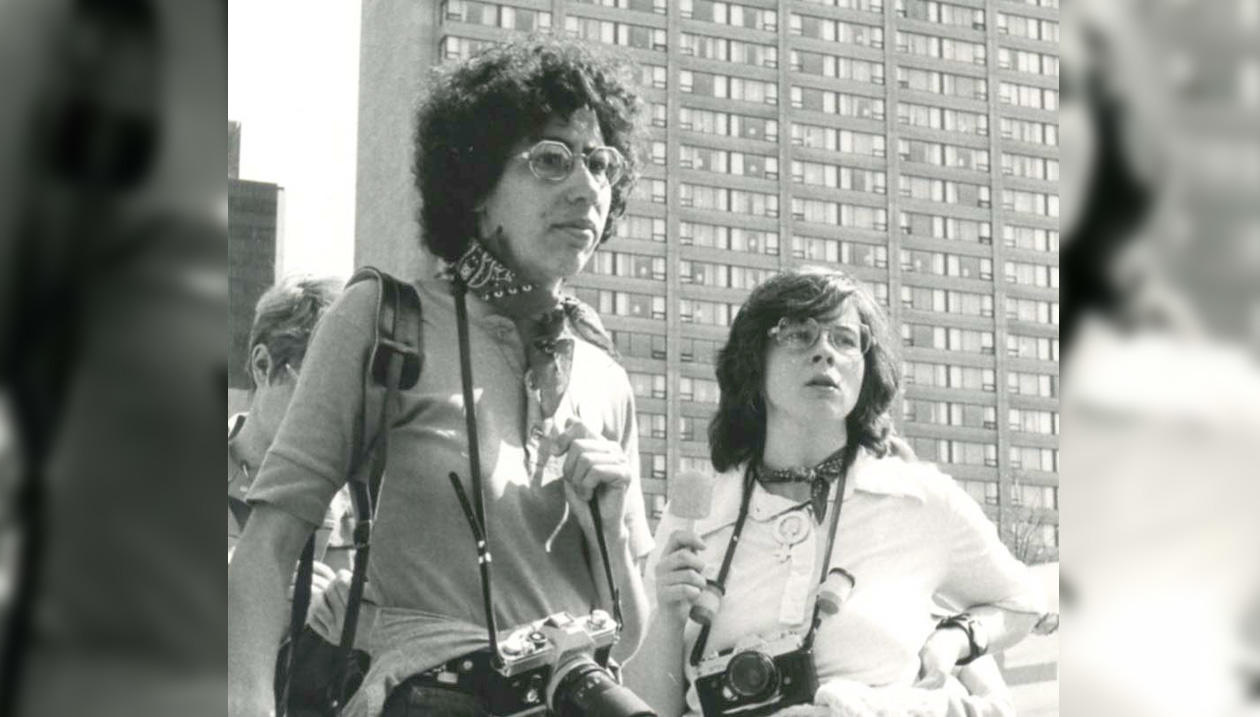Flipping through history: a new way to consult the collection
The CWMA photographs have recently been transferred to binders specially designed for the preservation and consultation of historical visual documents. Each photo is now accompanied by a detailed description on the back including title, reference code, date, subject and photographer names, events, and use, when this information is known.
This new arrangement makes it easier to locate, consult, and analyze the photos, while respecting the original order of the collection. Above all, it allows for a more fluid and lively discovery experience. Leafing through the binders is a bit like opening a collective family album, where each image is a call to memory, collective identification, and storytelling.
A collection born out of militant commitment
It is important to remember that this collection is the result of the rigorous and committed work of women who came together at the Women's Information Centre, a collective formed in Toronto in the 1980s. As activists and archivists, they carefully documented the struggles, faces, and key moments of the Canadian feminist movement. Thanks to their inventories, a large portion of the photographs have already been identified—but many faces, places, and events remain unnamed.
That's where the community comes in.
Opening the archives to the community
This new presentation format makes the photographs more accessible to our students, researchers, and members of the communities represented. It becomes easier to view several images at once, compare perspectives, bring back forgotten memories, or add details. A forgotten name resurfaces, a date is corrected, an anecdote sheds light on an entire context. It is this process of participatory enrichment, a co-construction of memory, that we now wish for this collection.
And the benefits are manifold: visiting students, researchers, friends of the archives, journalists, etc. can all more easily find relevant images, illustrate their publications, remember that they were there and recognize themselves or their friends, or simply forge links with a history that is too often relegated to silence.
Caring, recognizing, respecting
This transformation also responds to an ethical concern: caring for the people represented. Better identification also means greater respect. It becomes possible to inform the people concerned, discuss the rights associated with the images, and ensure respectful and appropriate use. This attention echoes the principles of care in archiving: not just preserving, but also protecting, valuing, and engaging with the documents and the people connected to them.

What will you discover?
We invite you to come and explore this renewed collection, to leaf through these albums of a movement that continues to inspire. Who knows? You may recognize a familiar face, a forgotten moment, or discover a page of history that speaks to you in a new way.
Because sometimes it's the small changes (like new filing folders!) that open up greater perspectives on the past and the future.
Thanks to Surraby, Madeline, and Leah, volunteers at the ARCS, who supported us in this project.
